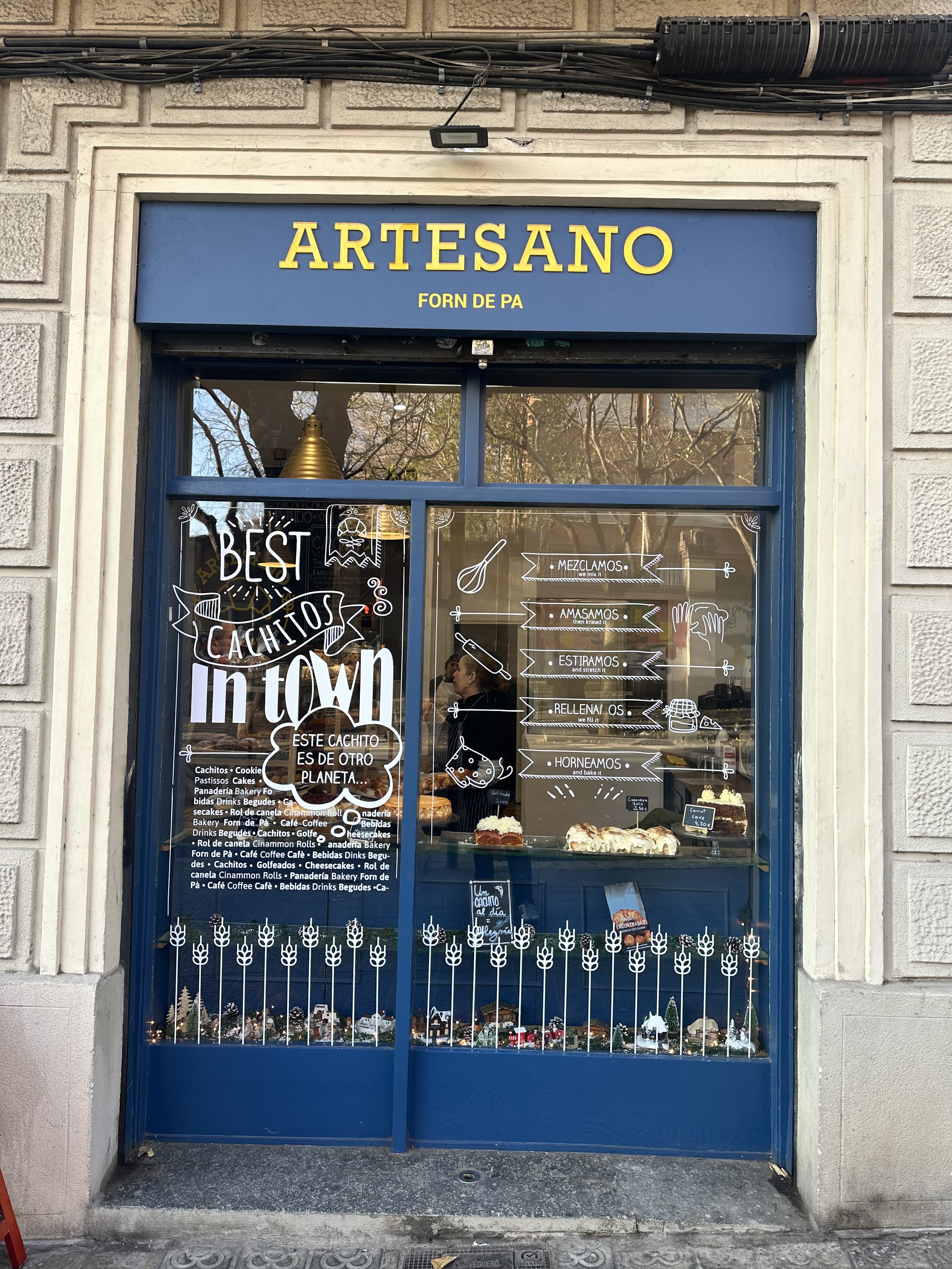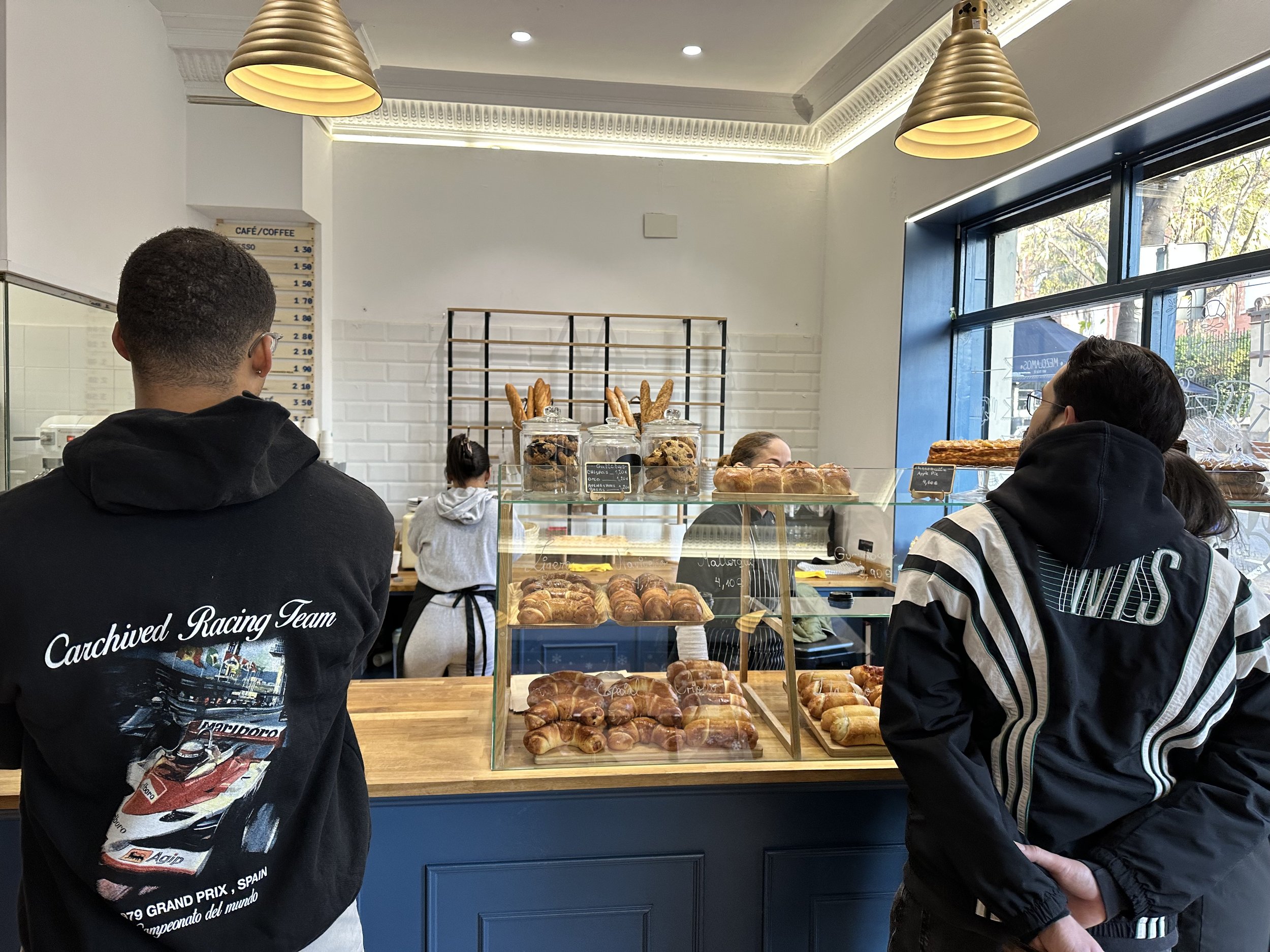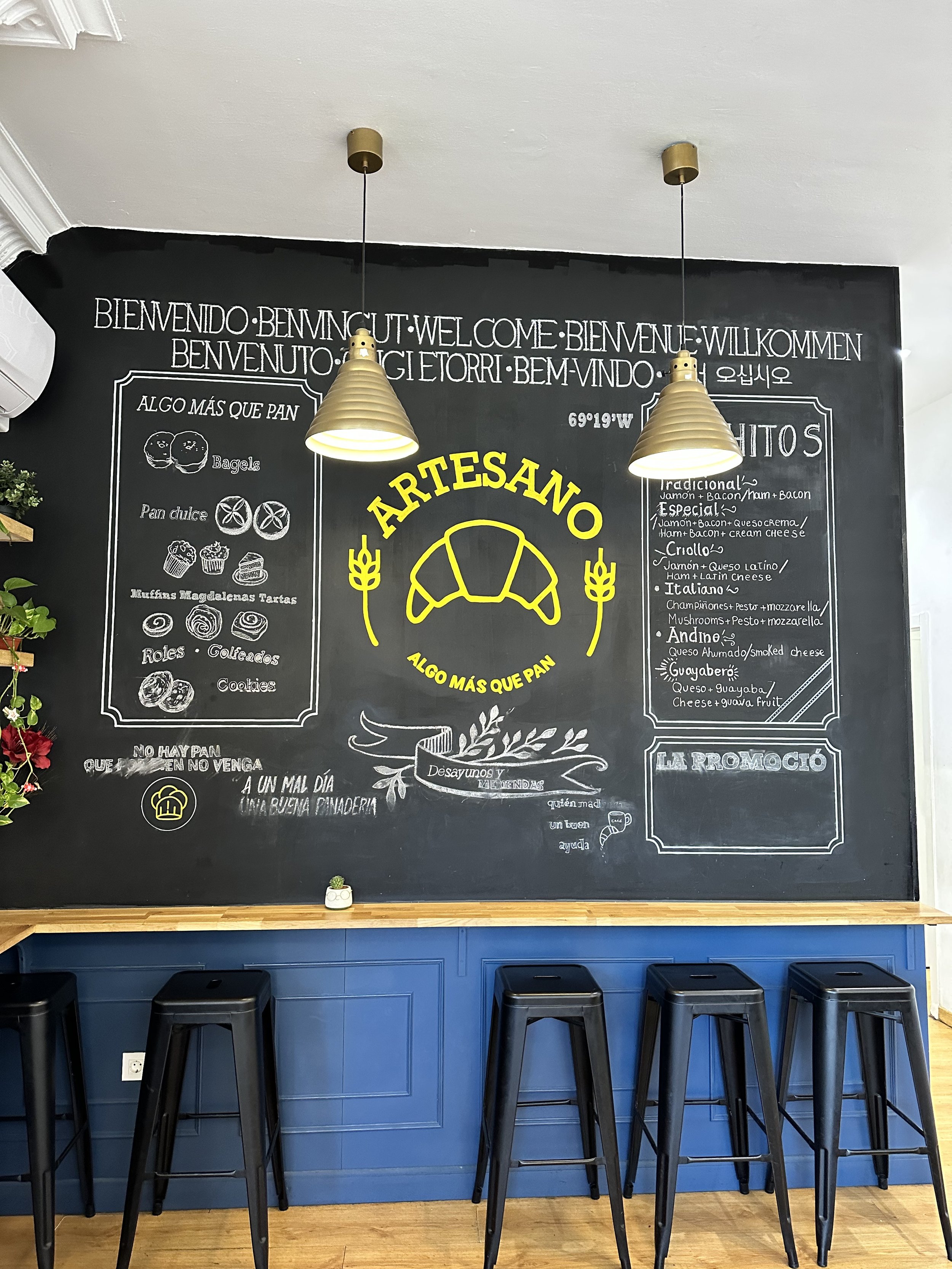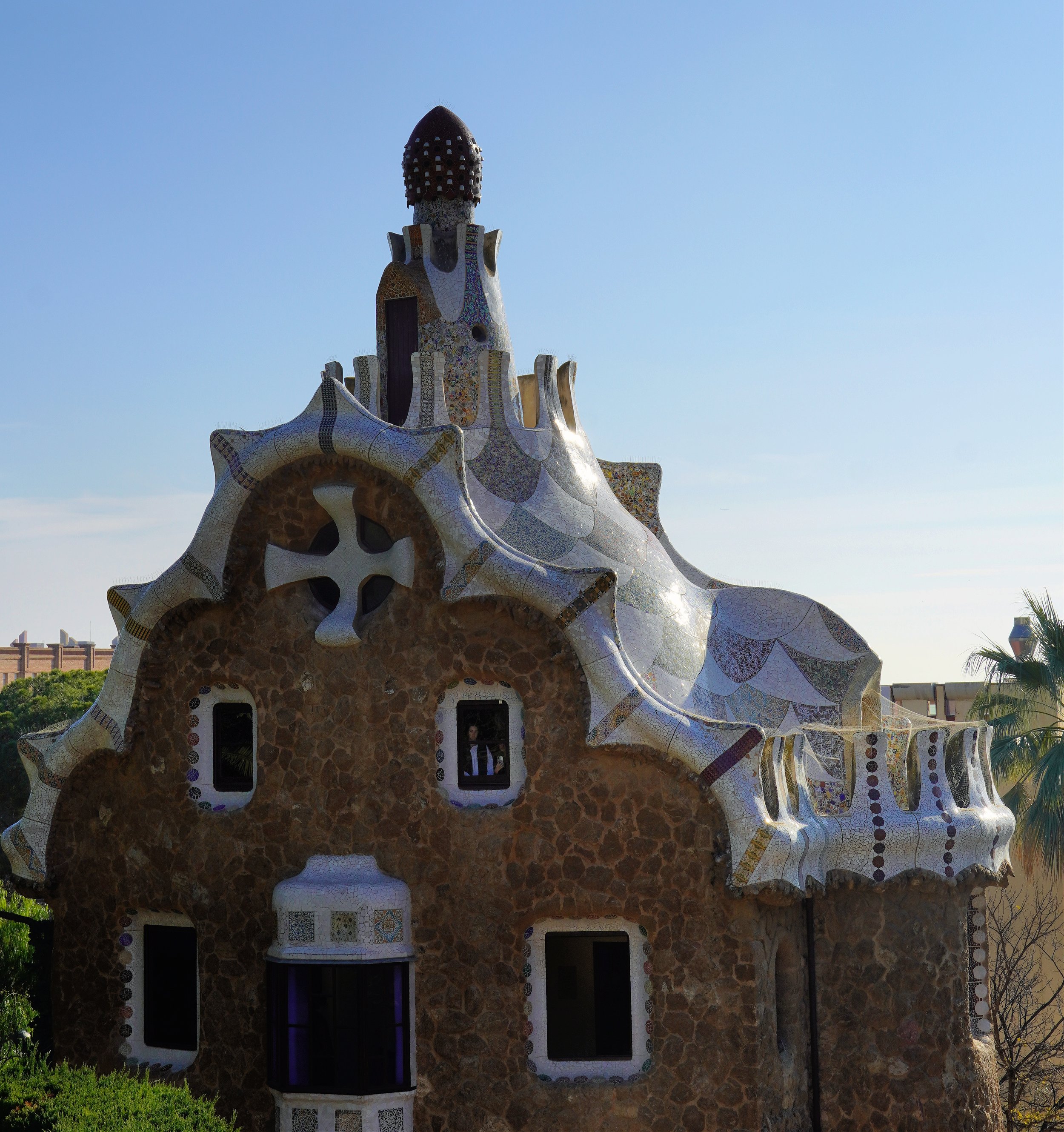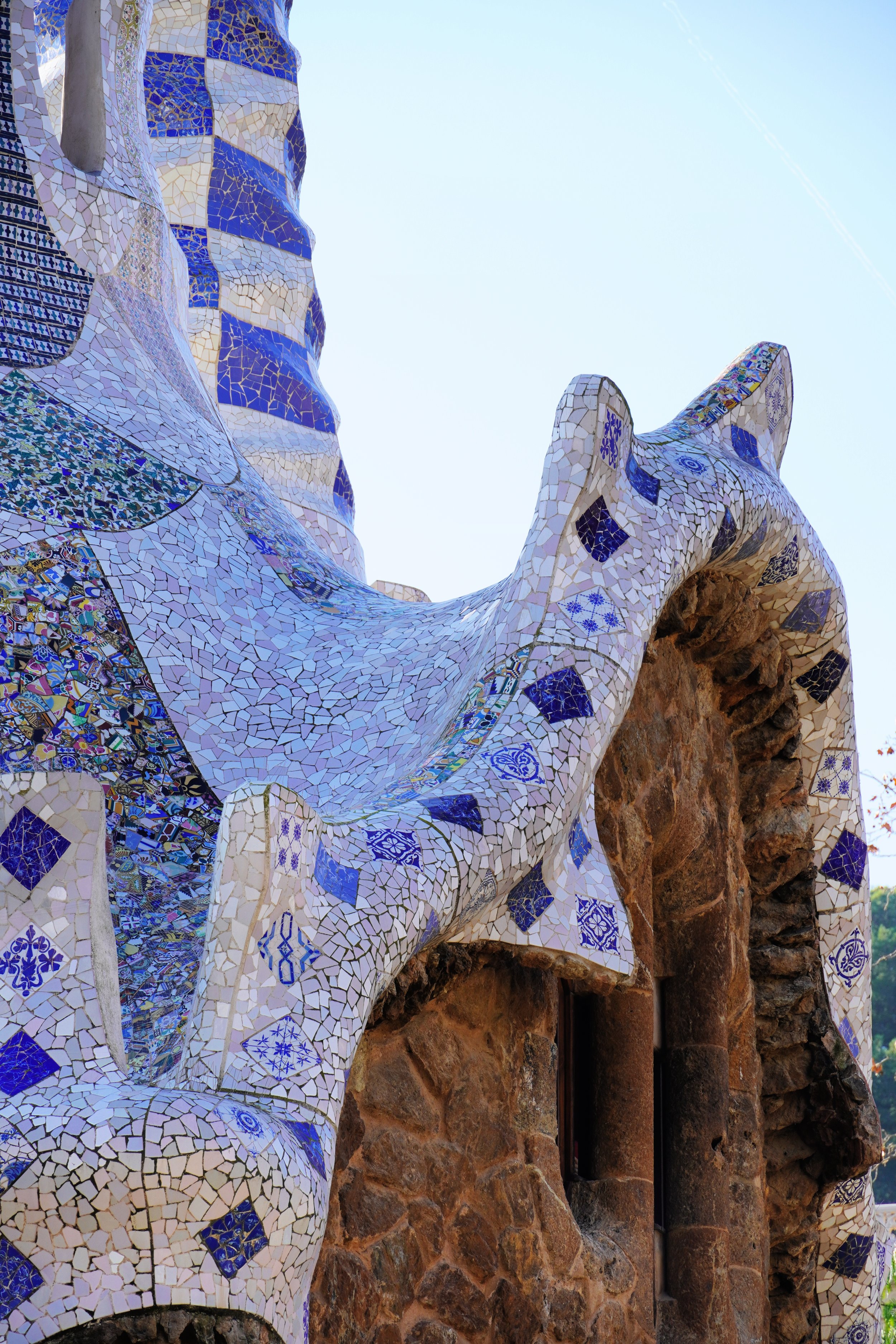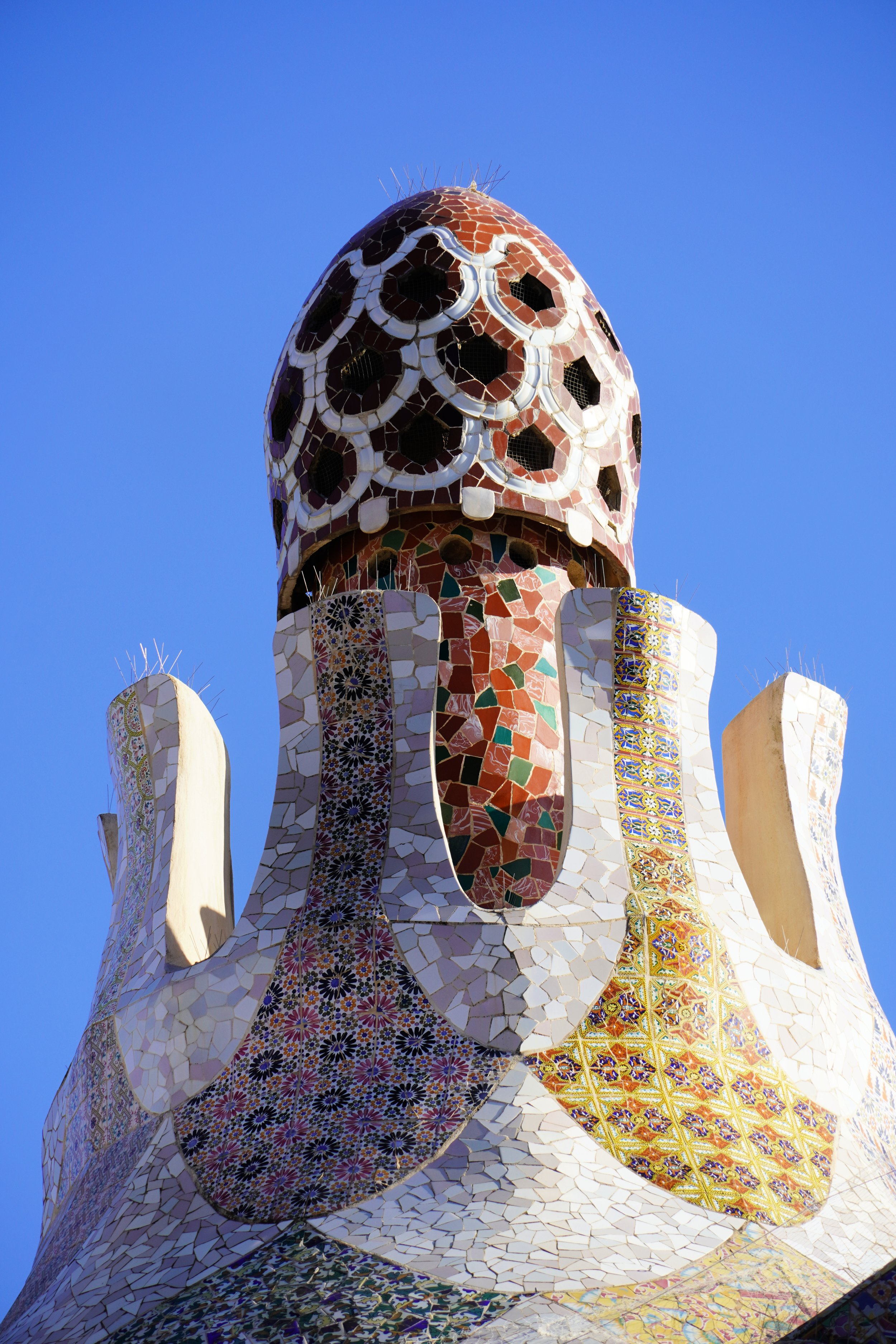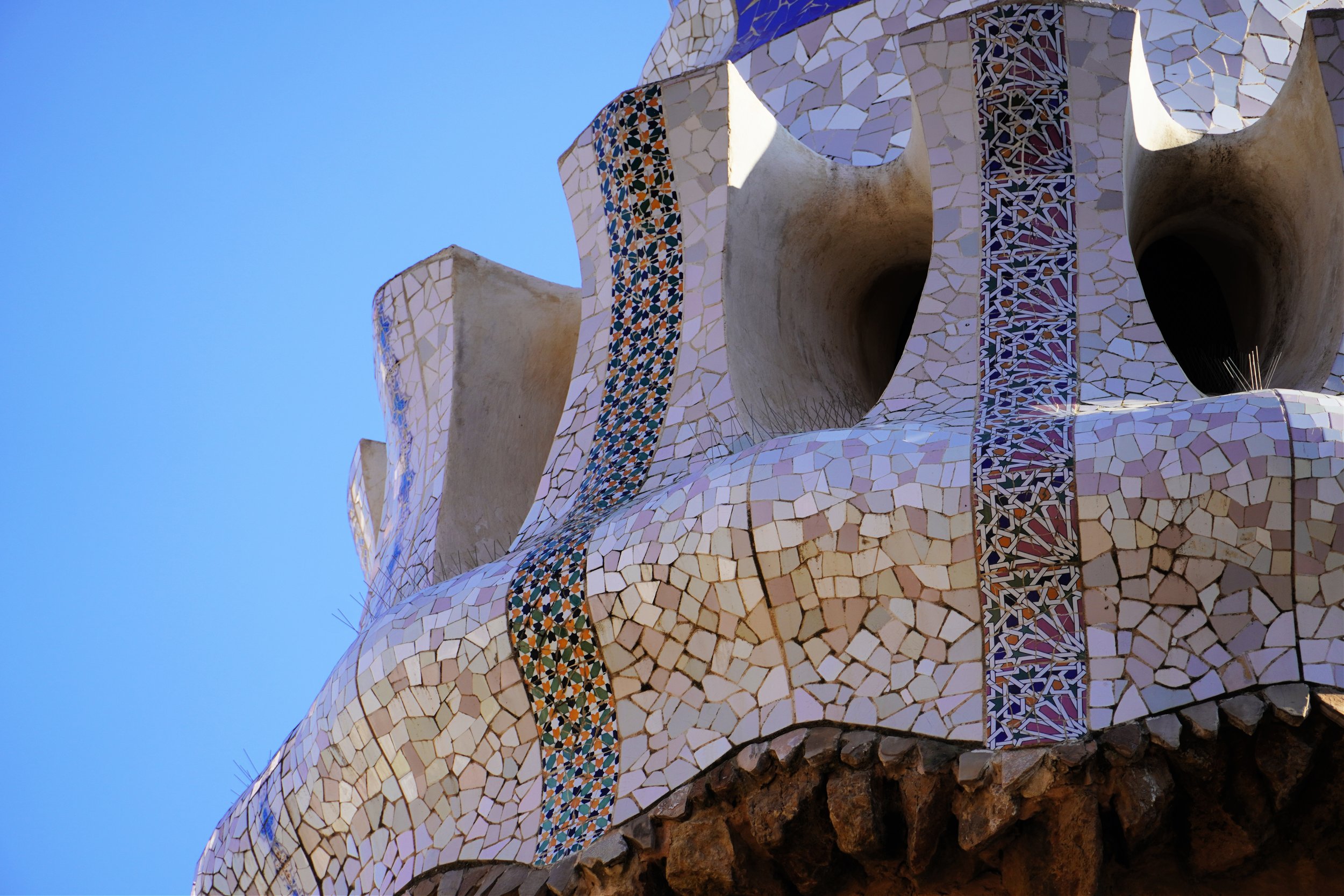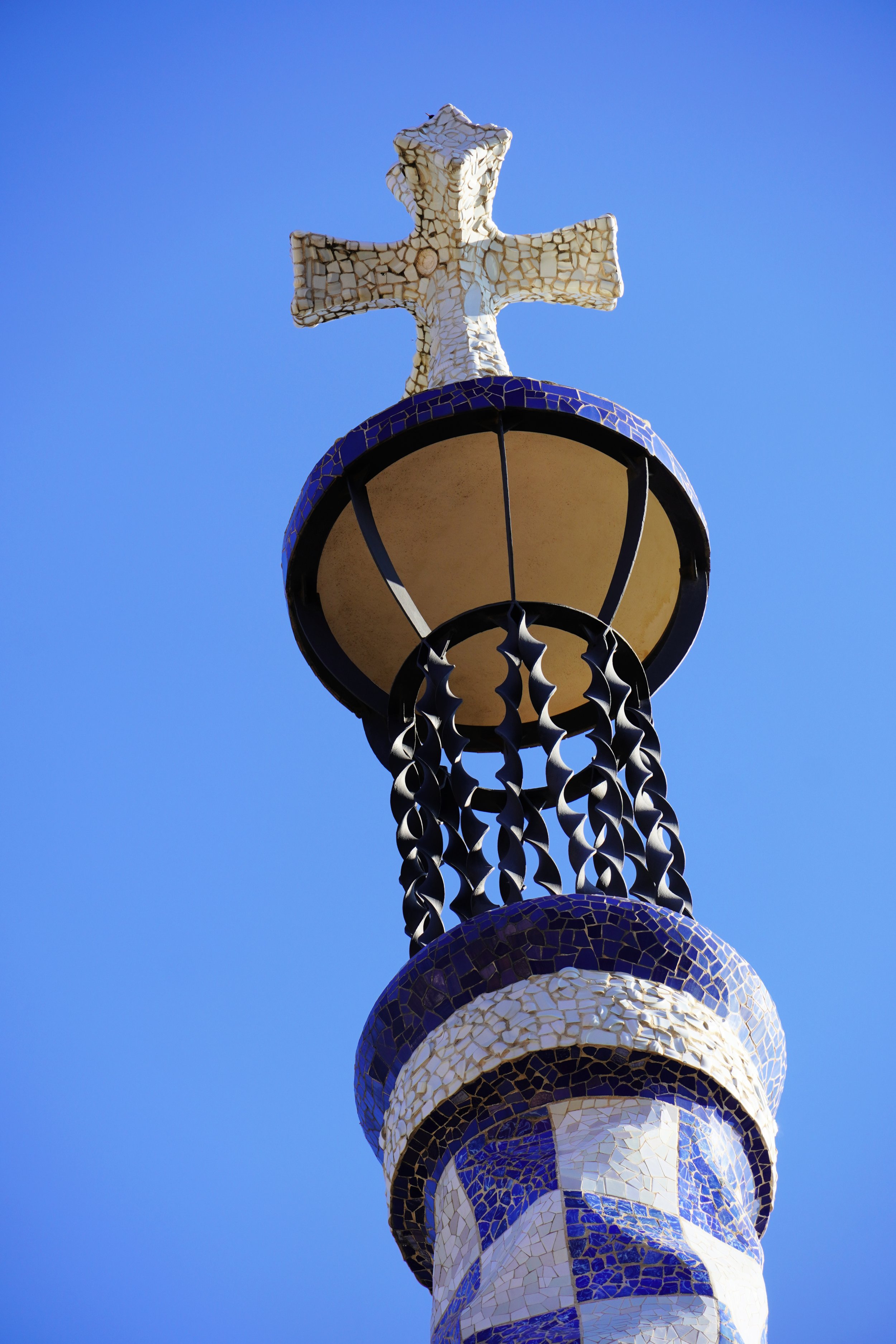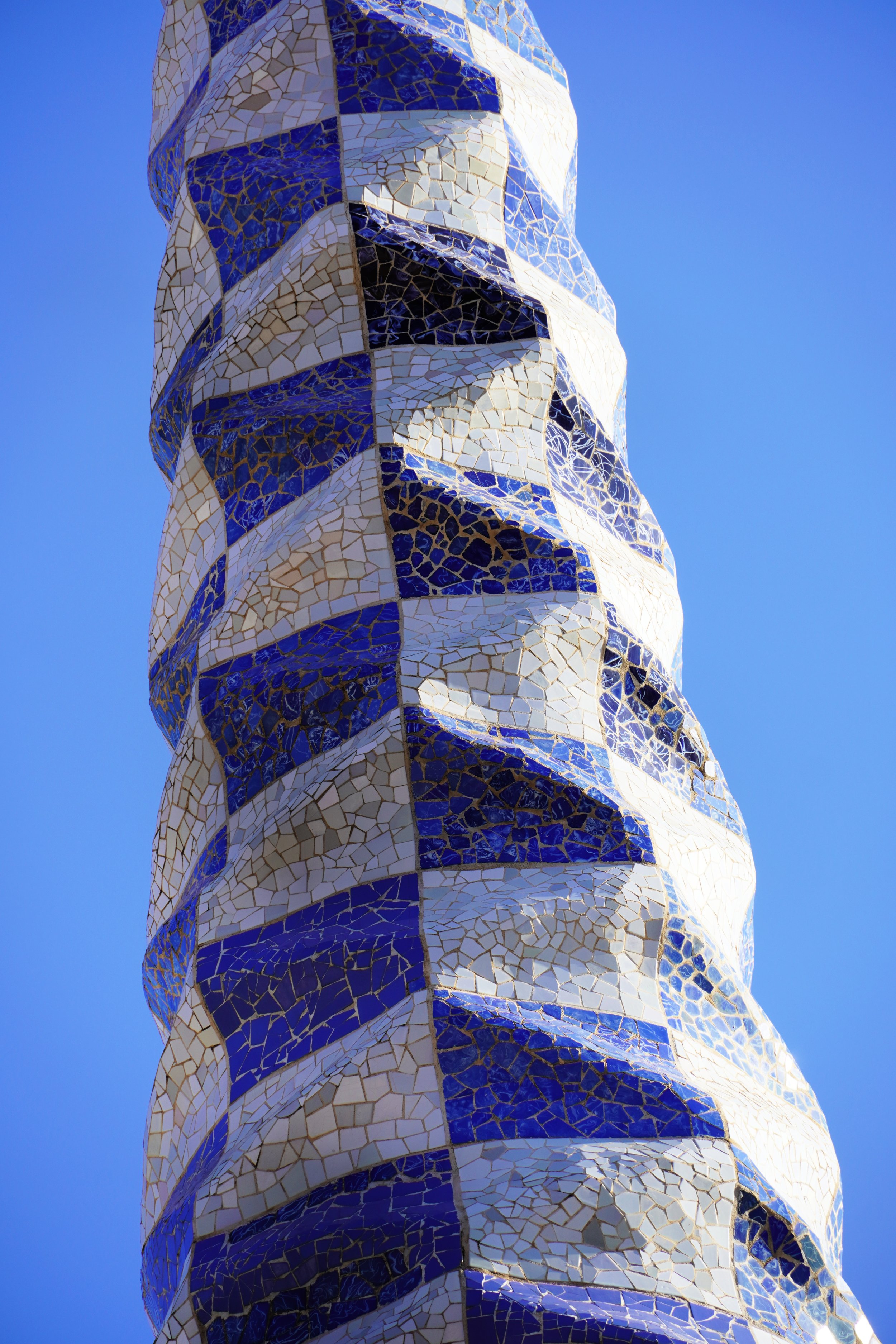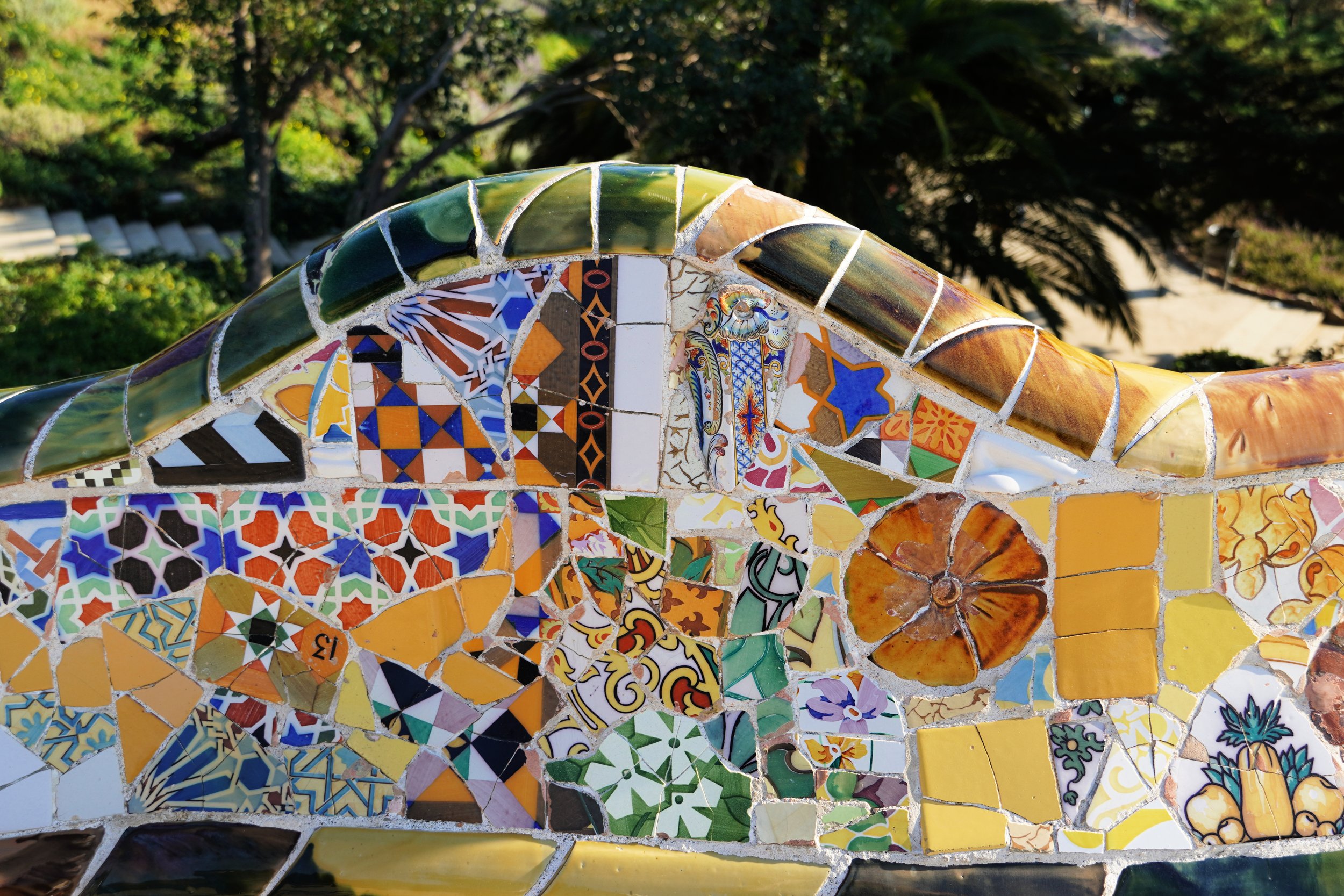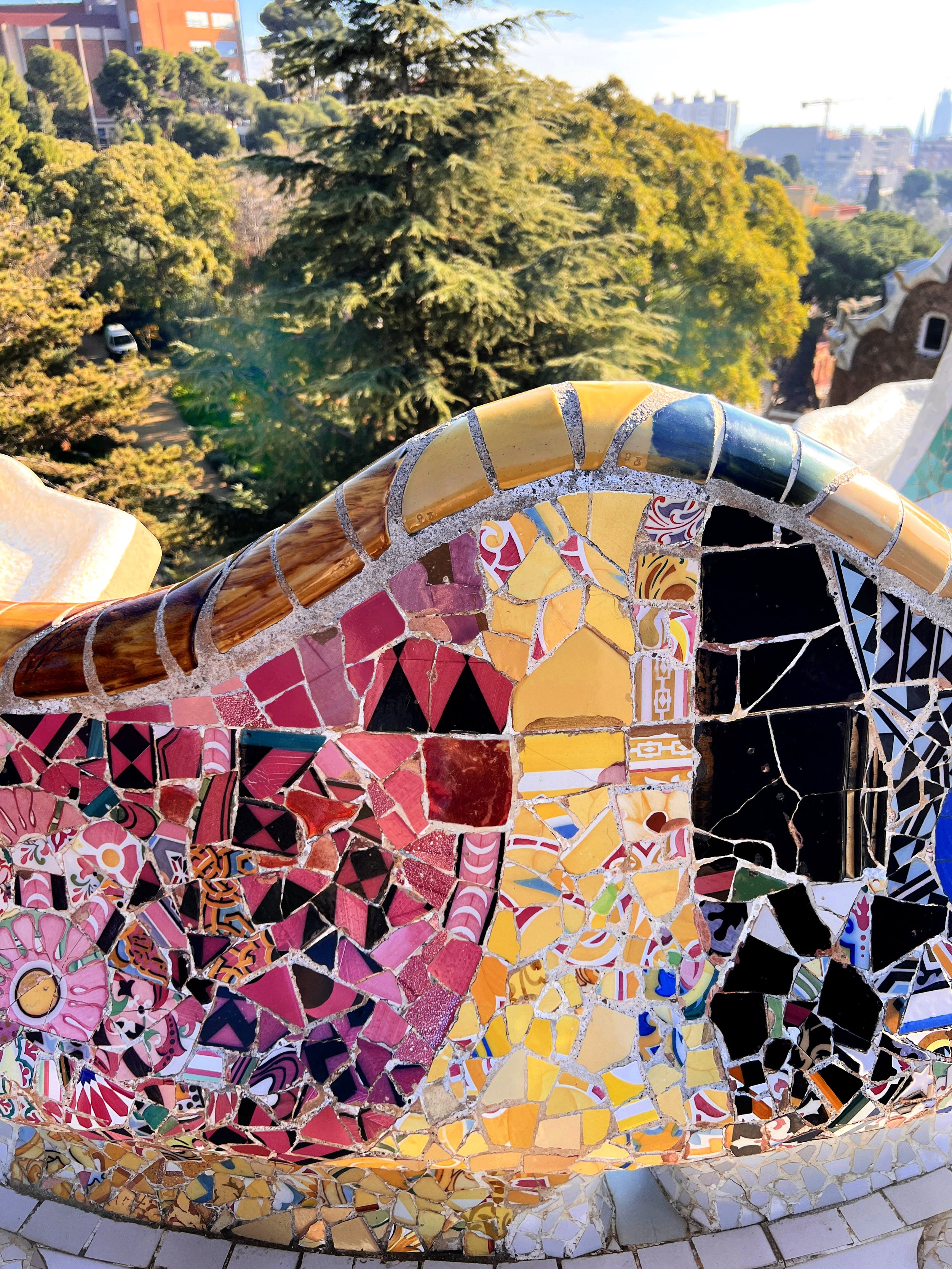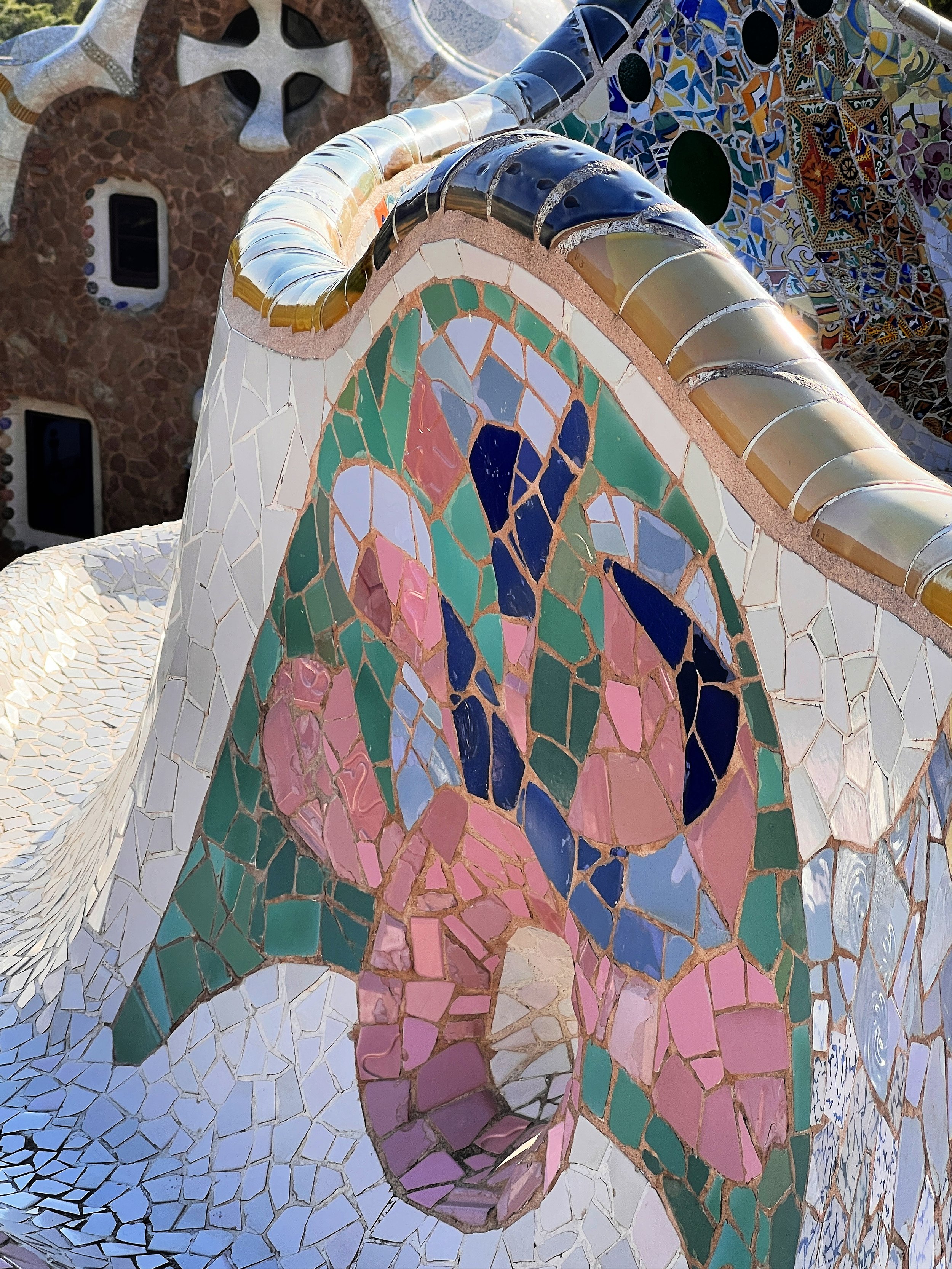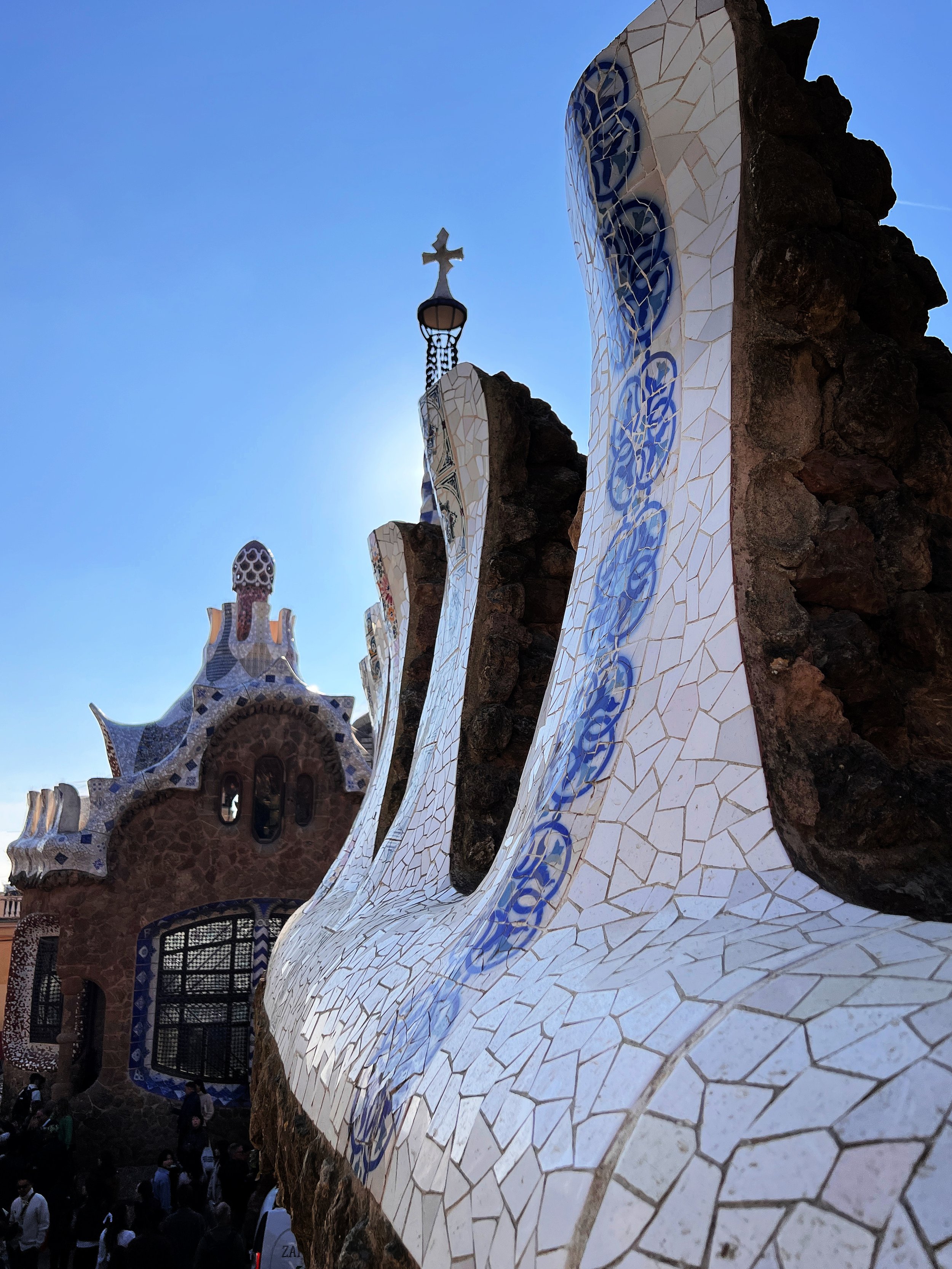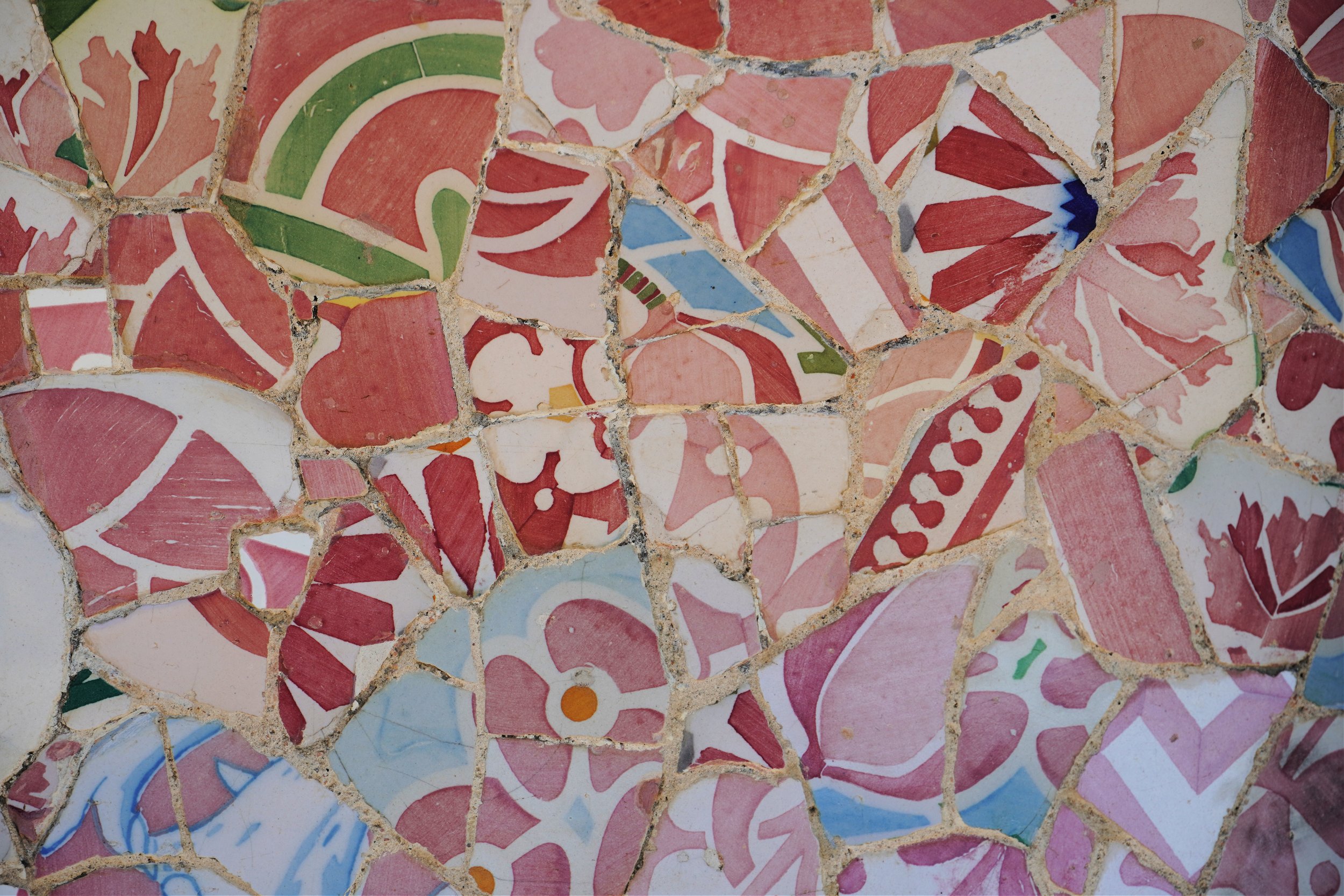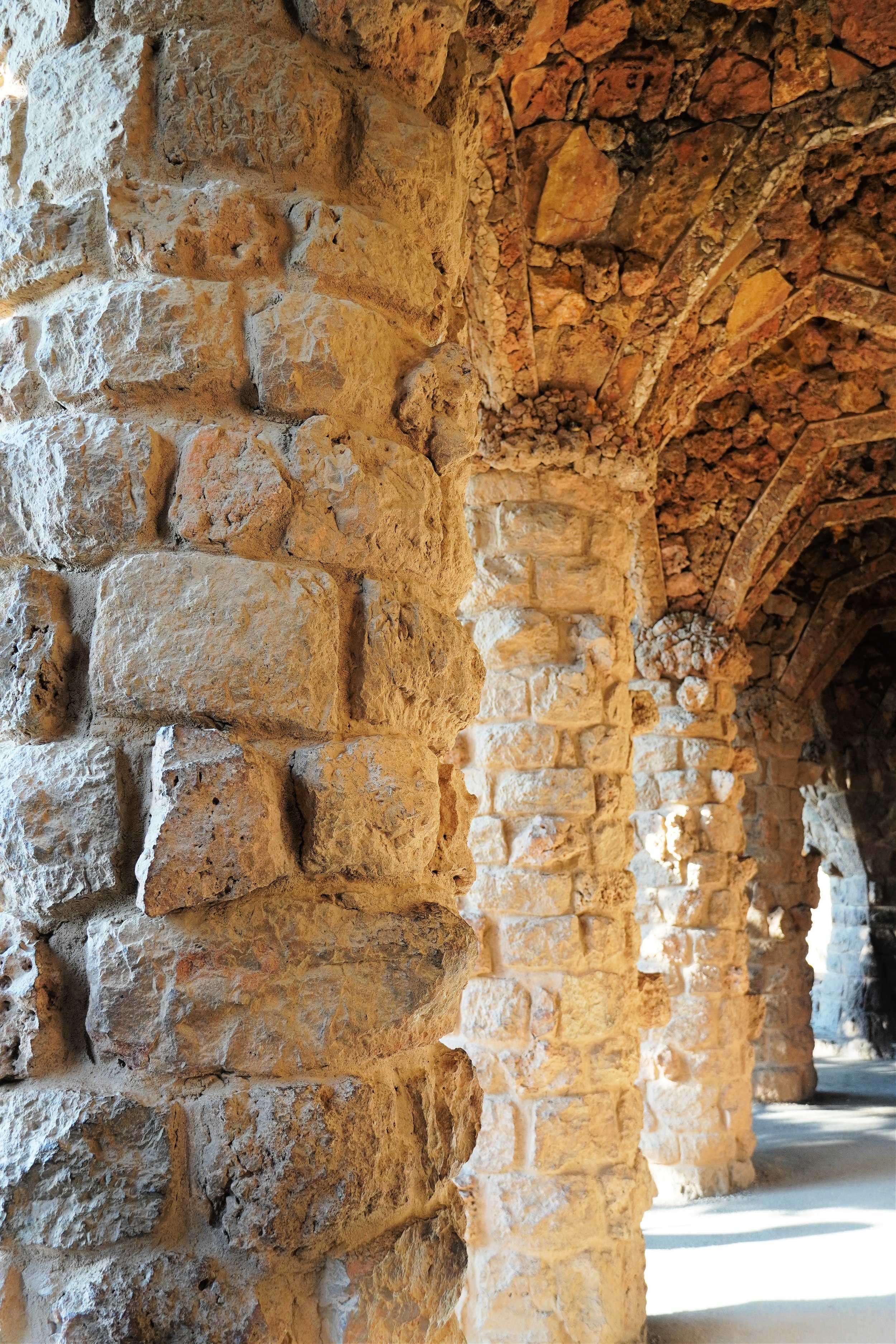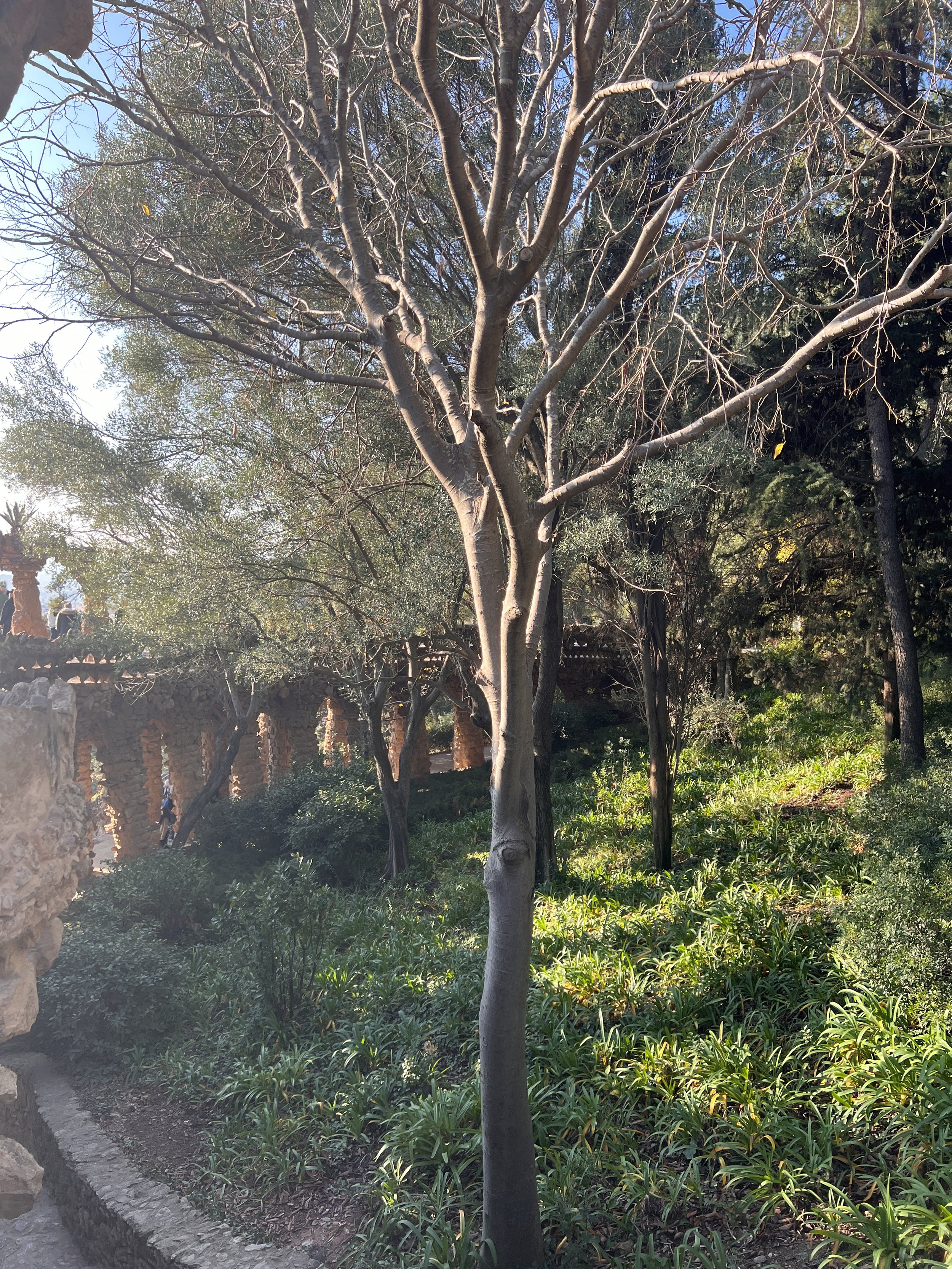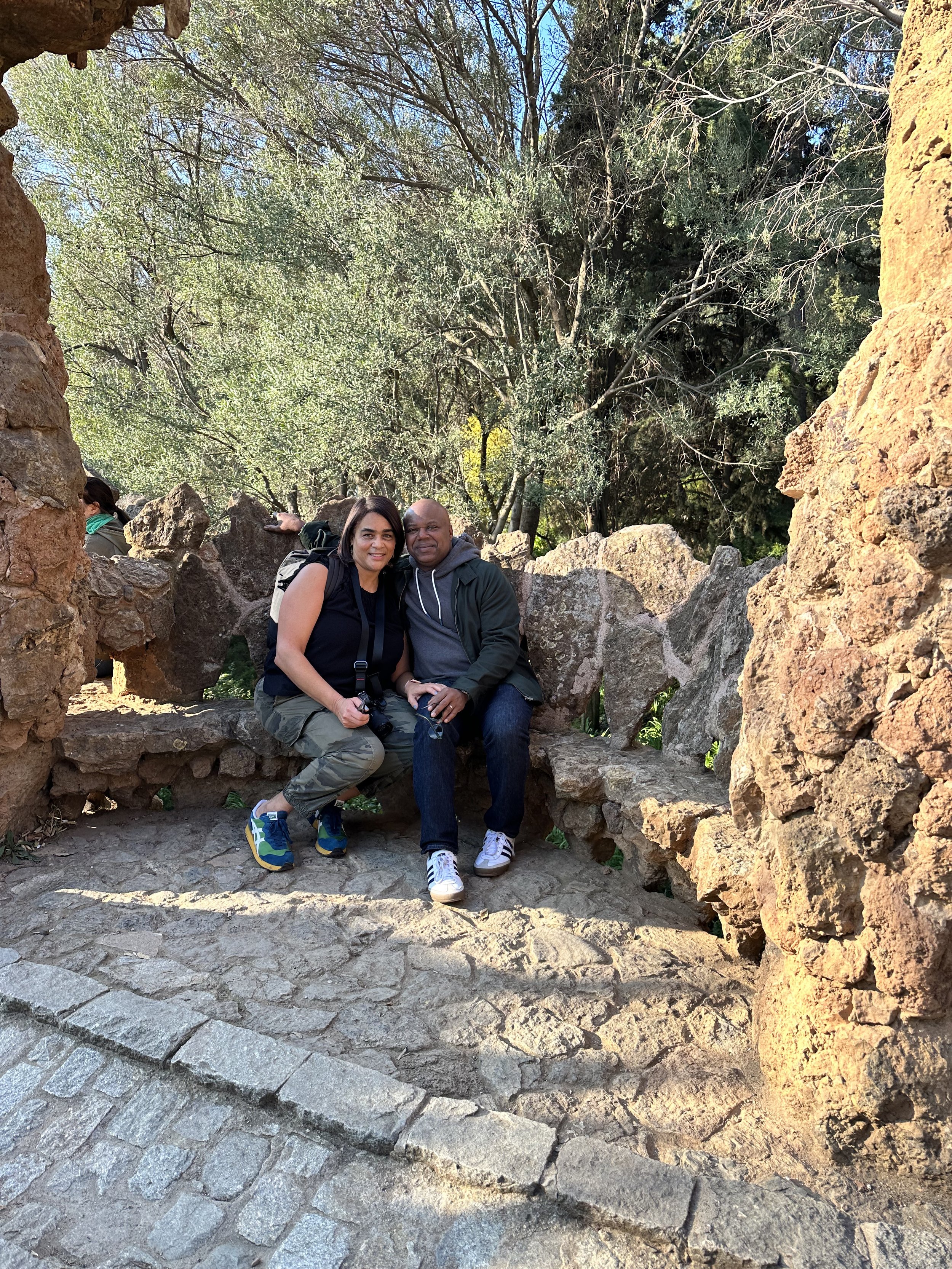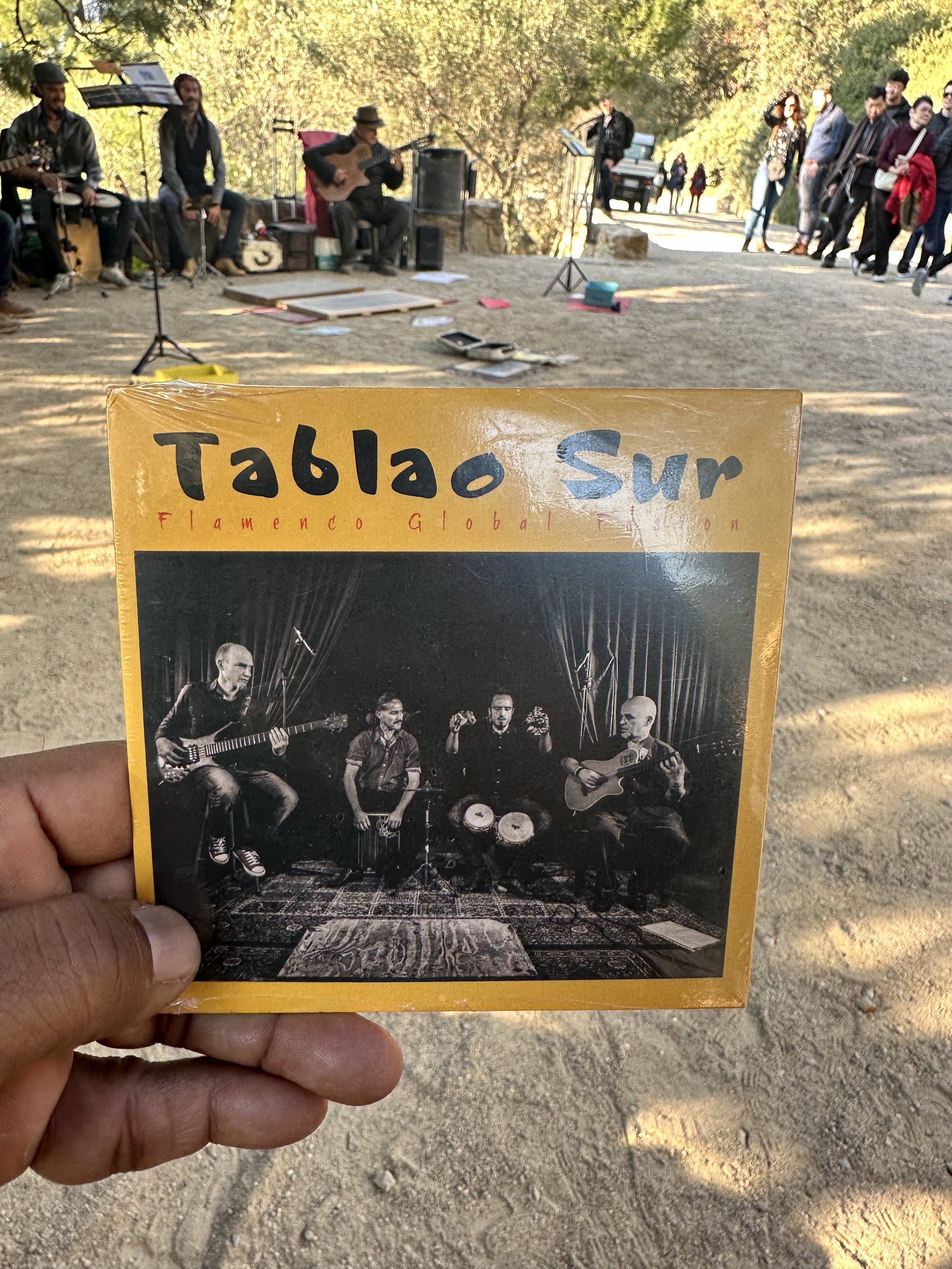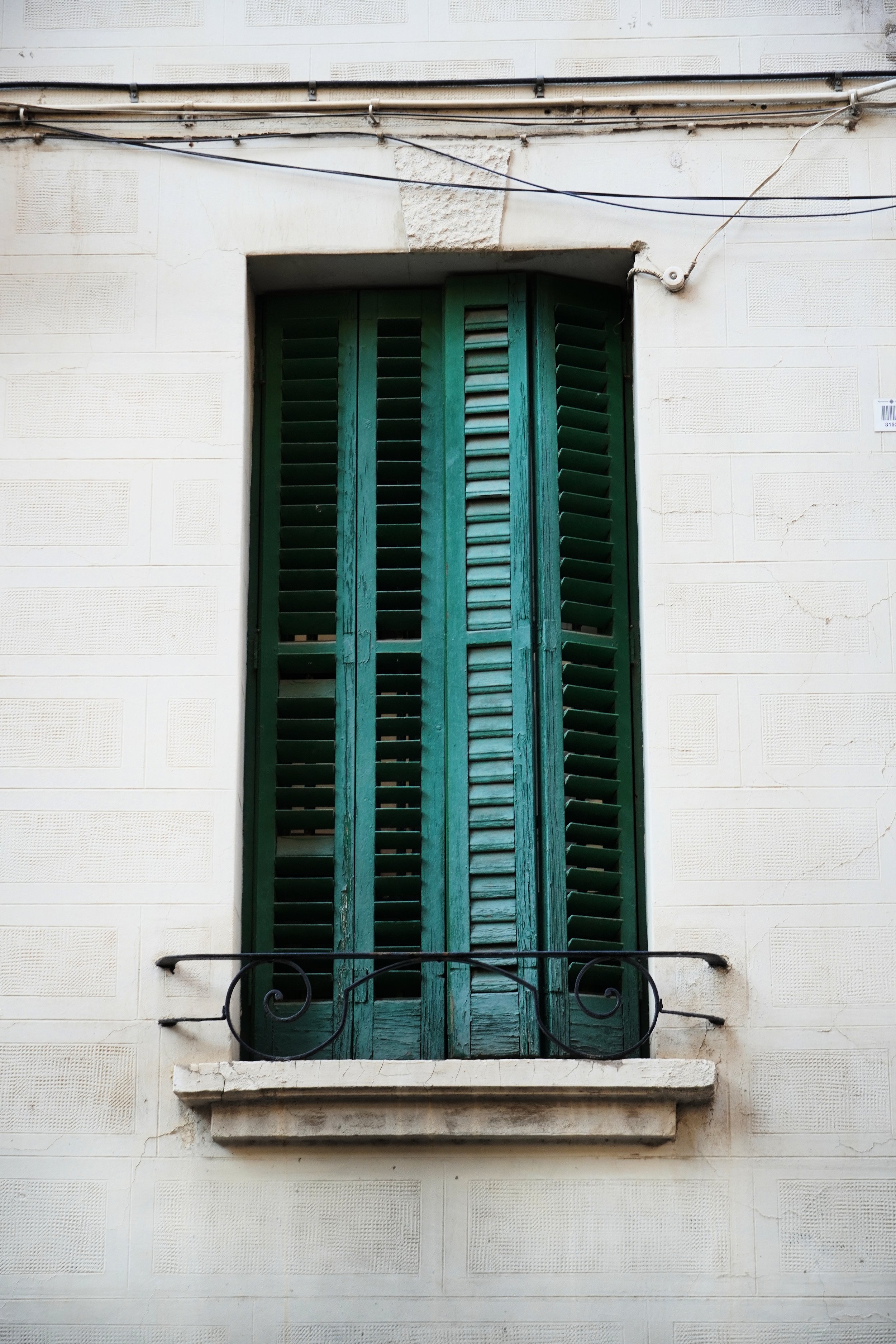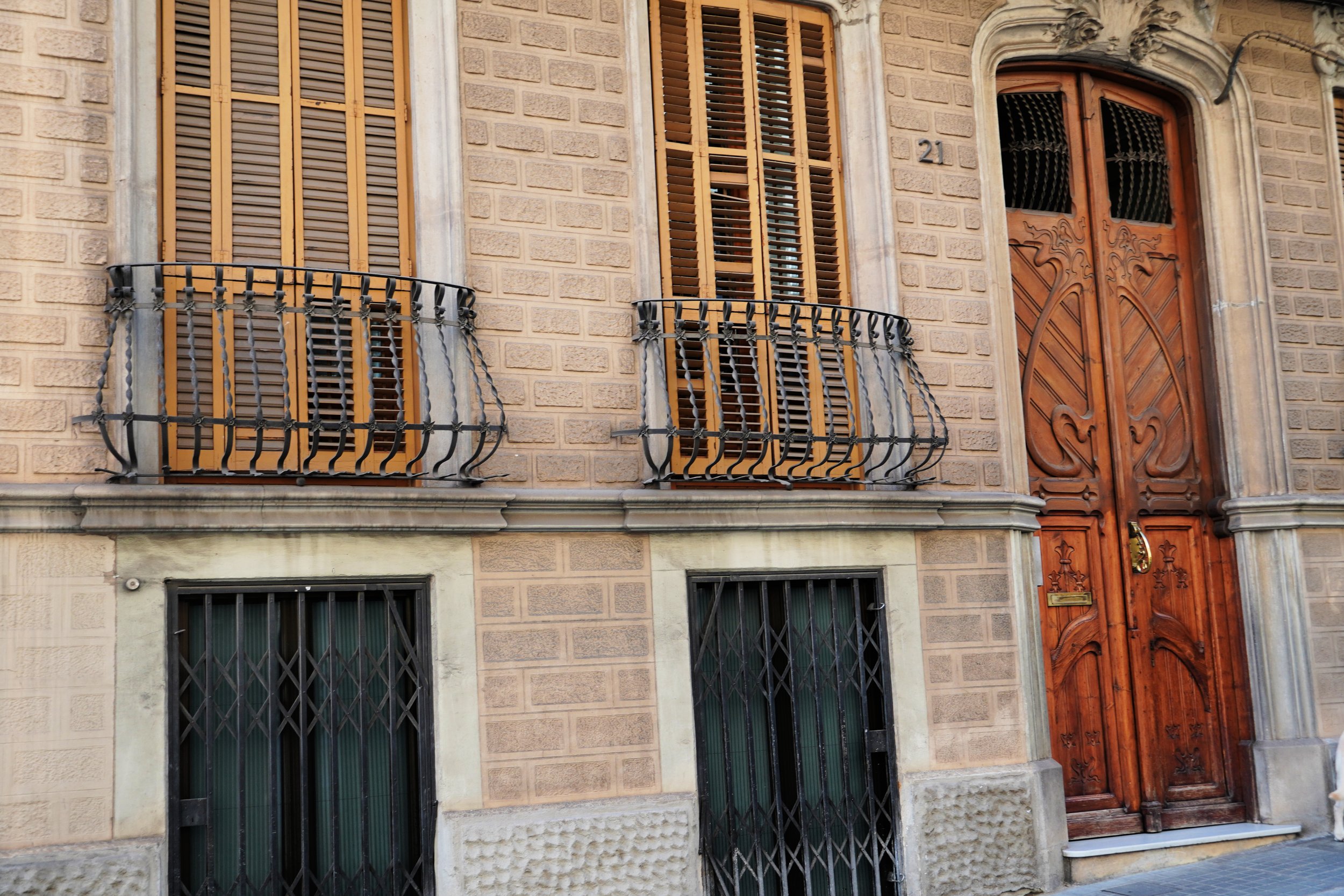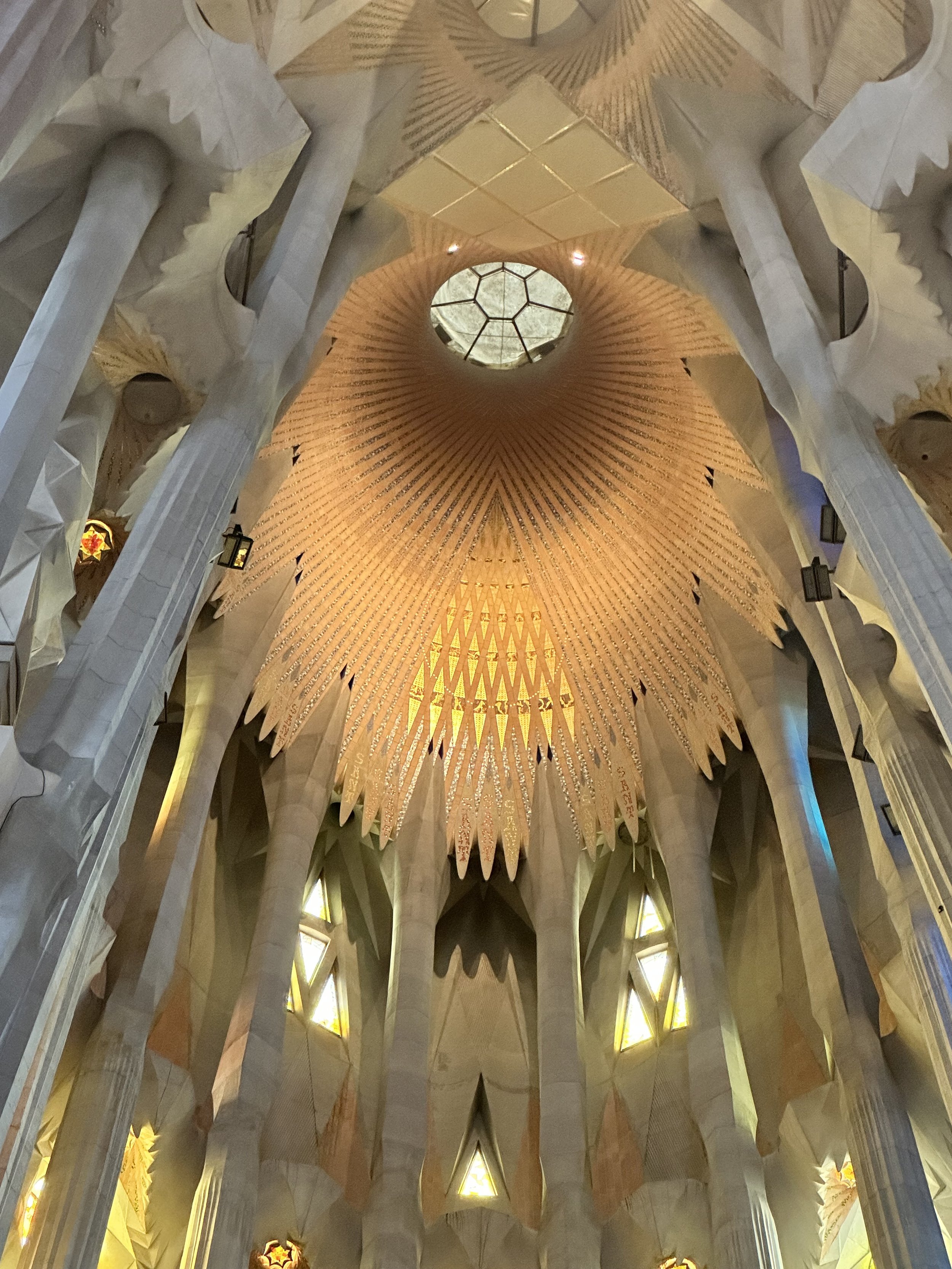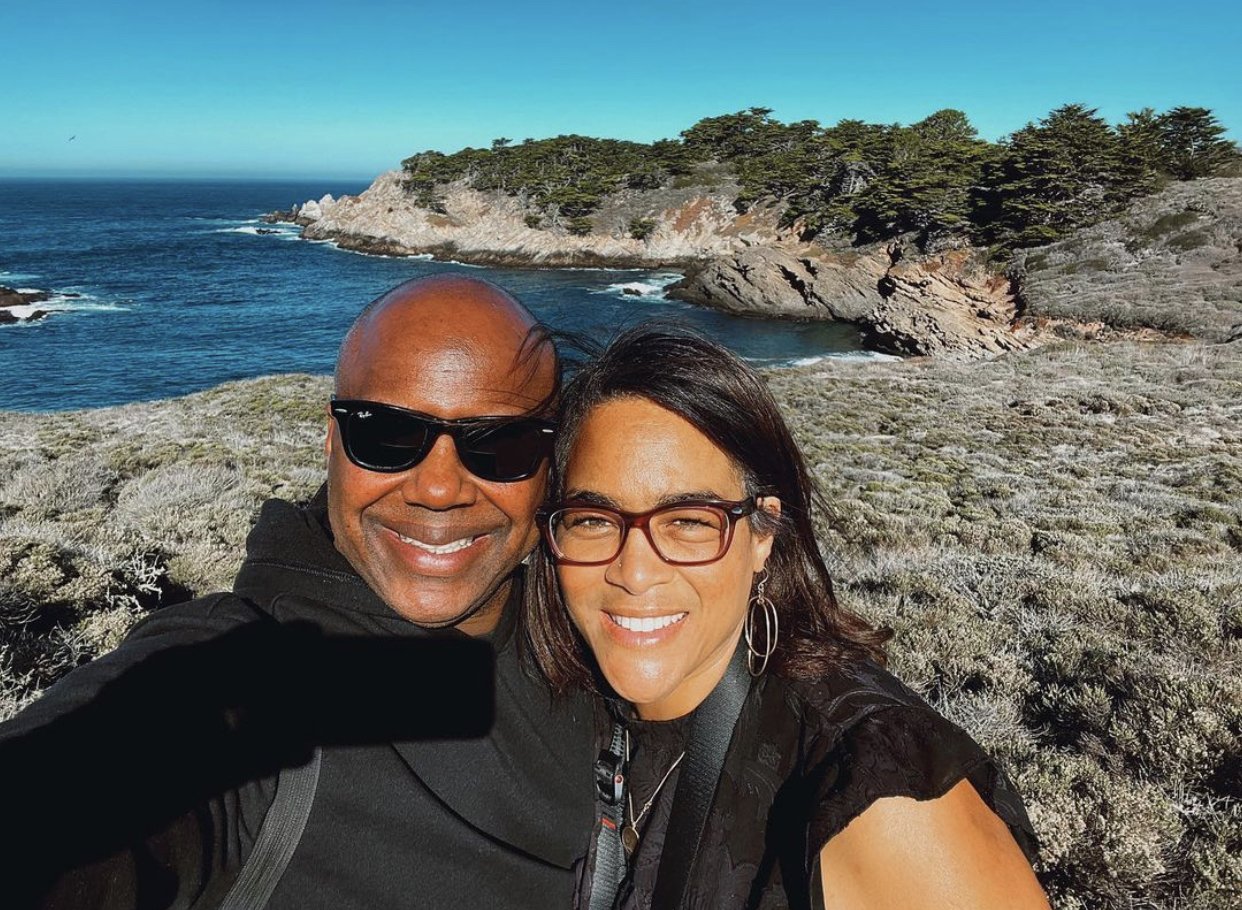Whimsical Gaudi: A Visitor's Guide to Barcelona's Park Güell

Nestled in the heart of Barcelona, Park Güell displays the creative genius of renowned architect Antoni Gaudí. A whimsical and colorful public park, this UNESCO World Heritage Site attracts millions of visitors each year. Here are my tips for maximizing your trip to this magical space.
Getting There:
Park Güell is conveniently located in the Gràcia district of Barcelona — we walked there from our accommodations near the Sagrada Familia (about 20 minutes). The park is also easily accessible by public transportation, with the closest metro station being Lesseps on Line 3. From there, you can take a leisurely 15-minute walk to the park's entrance. Alternatively, you can also take bus lines 24 and 92 — both stop at Carretera del Carmel-Park Güell, which is right across the park's main entrance. If you are taking the Hop-On Hop-Off, take the blue line. Get off at Park Güell.
A view down the street after our lovely morning walk to Park Güell.
Along the way, we discovered a cute cafe, Artesano and stopped off for a breakfast snack . They serve a selection of coffees and beverages as well as baked goods. Easy items to eat as you walk to Park Güell - I ordered the Italiano Cachito which was filled with mushrooms, pesto and mozzarella.
Artesano is located at 443 Carrer de Sardenya (Gracia neighborhood)
To truly appreciate the beauty of Park Güell without the crowds, aim to visit during the early morning or late afternoon. The park opens at 9:30 am, and is the best time to enjoy the park’s serenity without crowds — we arrived at 10am and it was already getting busy. Sunset is also a magical time to witness the park bathed in golden hues, providing a unique perspective on Gaudí's masterpieces - park closes at 7:30pm
Park Guell’s history dates back to the 20th century when it was first commissioned by the wealthy businessman, Eusebi Güell. Eusebi Güell was inspired by English gardens and wanted to create an aristocratic community that was surrounded by nature. Guell asked Antoni Gaudí to take on the project and construction officially began in 1900. Despite their vision, the project did not receive interest from buyers as they anticipated….. there were actually only two houses that were completed in the park and eventually, Guell abandoned the project and donated the park to the city of Barcelona.
Park Trails and Sections:
Park Güell is divided into two main areas: the Monumental Zone and the Free Access Zone. The Monumental Zone, where the famous Gaudí structures are located, requires a ticket for entry. Make sure to purchase your ticket in advance, as the number of visitors per day is limited.
Monumental Zone
Casa Del Guarda (Gingerbread House): You can’t help but smile at these sweet homes at the entrance of Park Güell; With curving lines and colorful tiles - it’s like they appeared out of a children’s book. I loved the rooftop with various shades of my favorite color, blue…. all of the mosaic sections remind me of a homemade quilt.
The Salamander Stairway: The iconic mosaic salamander “El Drac”, greets you along the grand stairway. These vibrant stairs lead to the heart of the park and is an example of how Gaudi mastered mosaic art - it vibrantly adorns structures throughout the park. This art form known as, trencadís, uses broken pieces of ceramic tiles and creates a dazzling kaleidoscope of colors……. Trencadis is a Catalan term that literally means “broken up”.
While the name “El Drac” sounds fierce, I found this welcoming salamander to be pretty sweet.
Hypostyle Room: These columns reminded me a little of the Sagrada Familia’s interior -there are 86 of these pillars supporting the grand terrace and Serpentine Bench above. Be sure to look up - the ceiling has round bowl like spaces that fill the ceiling…. they continue to carry the mosaic theme that is seen throughout the park.
Nature Square: No exploration of Park Güell is complete without a visit to the Serpentine Bench. This mosaic-covered bench curves along the edge of the main terrace, offering panoramic views of Barcelona. The bench is a burst of color and texture….. at times, I forgot to look at views of the city because I was busy looking at all of the various tiles in their rainbow of colors.
Nature Square seems to float above the Hypostyle Room.
Take time to sit in various spots along the Serpentine Bench and take in the views of Barcelona.
Free Access Zone
Do not miss this area of the park — it is beautiful to explore as it offers charming trails, gardens, and stunning viewpoints of the city. Gaudi was a lover of nature - this is evident by the care he took in the pathways and structures found in this zone. They’re all integrated together in such a fashion that insures people take their time to observe the greenery, listen to birds in the distance, and take in the views below. As we walked along the trail we could hear a Spanish guitar in the distance and the sound of tapping feet….. we were so excited to discover a Flamenco group, Tablao Sur, as we got closer. They were amazing!
Columns of the Greek Theater along the Austria Garden.
Casa Trias was once owned by Martí Trias i Domènech, lawyer of the Güell family. Today, it remains a private residence and still belongs to the same family, the descendants of the lawyer and his wife , Anna Maxenchs.
Views of The Gaudi House Museum. This served as Antoni Gaudi’s home until he moved to the Sagrada Familia…. where he lived until his death in 1926.
After exploration of Park Güell, take some time to discover the surrounding neighborhood. Gràcia is known for its bohemian atmosphere, narrow streets, local boutique businesses and vibrant squares. Here are a few dining recommendations:
Güelly Sandwichpark: Sandwiches - Meat/Vegan/Vegetarian
Plaça del Sol: A lively square in Gràcia surrounded by cafes and bars.
Pastan Barcelona: specializing in plant-based pasta dishes and delicacies
El Mirador: Serving authentic Spanish Tapas - @elmiradorcarmelo
Note…. there is a small cafe on the grounds of Park Güell however, it is pretty pricey and doesn’t offer many food choices.
Final note. If you plan on visiting in the summer, double check their calendar of events…. there are oftentimes music festivals in the park!
A visit to Park Güell is an introduction to Gaudi’s world of creative artistry and exploring the beauty of nature.. Whether you're captivated by the intricate details of Gaudí's architecture or simply want to enjoy a peaceful stroll through lush gardens, this iconic park is a must-see destination for your itinerary while in Barcelona. Embrace its whimsical character and explore its natural trails.


